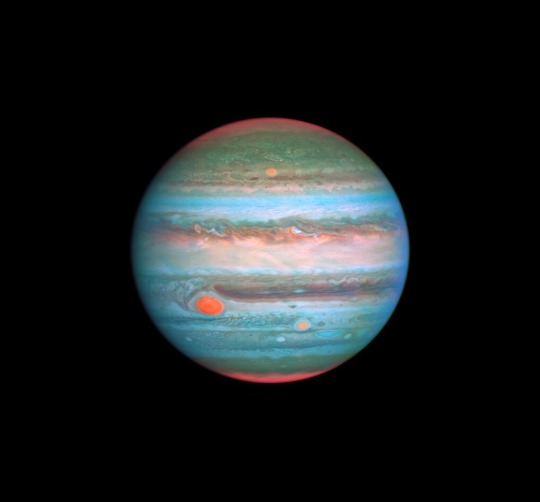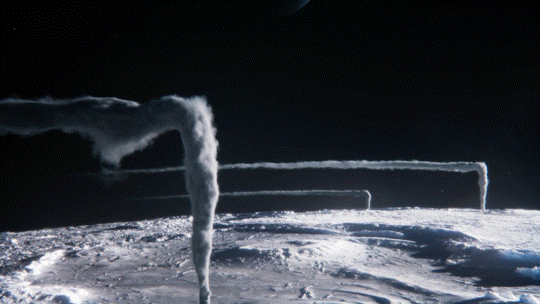when I get a few dollars I buy books and a new tie
Last active 2 hours ago
Don't wanna be here? Send us removal request.
Text

Jupiter in infrared and ultraviolet wavelengths. Astronomers use these filters (and others not shown here) to study differences in cloud thickness, altitude, and chemical makeup.
Credit: NASA/ESA
2K notes
·
View notes
Text

Triton is the largest of Neptune's moons, located 2.8 billion miles from the sun. Its surface is coated with nitrogen ice. But unlike the other moons of Neptune, Triton is an active world.

Geyser-like plumes of gas and dust stretch five miles high into Triton's atmosphere, which flattens them abruptly by 90 degrees, creating a vista so strange, it's hard to believe it's real. So what causes it?

While the inner moons orbit Neptune in the same direction, Triton goes the other way, suggesting it didn't form alongside Neptune. It came from elsewhere, out in the Kuiper Belt, thrown into elliptical orbit by Neptune's gravity as it drifted away from the sun.

So one possible explanation is that being captured close to a giant has consequences. Just as our moon raises tides on Earth, Neptune's enormous gravity raises tides on Triton, stretching and squashing it like a stress ball, heating it up, and melting its frozen interior.

We can see how the tide coming in can force water up through cracks in the Earth, creating plumes erupting up to the sky, but on a much smaller scale than the plumes on Triton.

Triton being captured by Neptune is thought to have fundamentally changed how it works, with the tidal energy from the planet's enormous gravity creating this magnificent and strange vista of five mile high plumes.
Solar System: Wandering Worlds on NOVA.
1K notes
·
View notes
Photo

1960s General Dynamics Illustration by Christian Montone
220 notes
·
View notes













